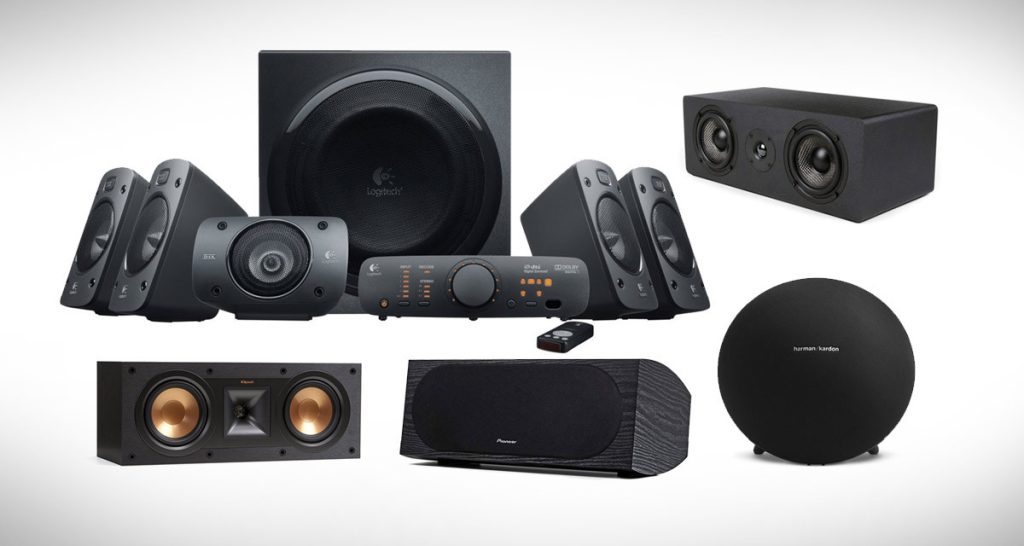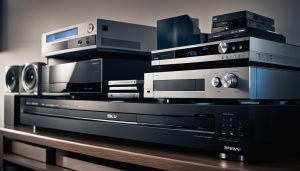Home Audio System: What It Does, How It Works, Applications, and Safe Usage Tips

A home audio system is designed to bring an immersive sound experience to your living space. Whether you’re enjoying a movie, listening to music, or hosting a gathering, a high-quality audio system can enhance your entertainment experience. In this article, we’ll explore what a home audio system does, how it works, where it’s used, and tips for safe usage.
1. What Does a Home Audio System Do? (Introduction, Popular Types, and Uses)
A home audio system is a collection of components designed to deliver high-quality sound in your home environment. It typically includes speakers, an amplifier, and various sources such as a TV, music player, or streaming device. The system is built to enhance your entertainment experience, providing clear, powerful audio for music, movies, and more.
Popular Types of Home Audio Systems:
- Soundbars: Compact and sleek, soundbars are ideal for smaller spaces and offer easy setup. They are particularly popular for improving TV audio.
- Home Theater Systems: These systems consist of multiple speakers (front, rear, subwoofer) and a receiver. They deliver surround sound and are perfect for movie enthusiasts.
- Wireless Audio Systems: These systems, like Sonos or Bose, connect via Wi-Fi or Bluetooth, offering flexibility and ease of control from your smartphone or tablet.
- Stereo Systems: Traditional two-speaker systems, typically used for music listening, delivering high-quality sound for a range of audio content.
Benefits:
- Immersive Sound: Whether it’s for a movie or a concert, a good home audio system provides a rich and immersive sound experience.
- Convenience: Many modern systems offer wireless connectivity, making it easier to control and set up.
- Customization: You can choose a system that fits your room size, budget, and audio preferences, ensuring optimal sound quality for your needs.
2. How Does a Home Audio System Work? (Principle of Operation and Key Components)
A home audio system works by amplifying and delivering sound through speakers that have been designed to handle specific audio frequencies. The core principle is to convert electrical signals into sound waves, creating an enjoyable listening experience.
Key Components of a Home Audio System:
- Speakers: These are the most important part of the system, responsible for producing sound. Depending on the setup, you may have speakers for the front, rear, center, and subwoofer.
- Amplifier: The amplifier boosts the audio signal to a level that can drive the speakers. It ensures that the sound is loud enough without distortion.
- Receiver: In many home theater systems, the receiver acts as a hub that manages audio signals, processes surround sound, and connects various devices such as DVD players, game consoles, and streaming services.
- Sources: These are the devices that provide the audio signals. It could be a TV, Blu-ray player, game console, or music player.
- Cables and Wireless Connections: Audio systems connect via cables (HDMI, optical, RCA) or wirelessly (Bluetooth, Wi-Fi), depending on the setup.
How It Works:
- Signal Input: Audio signals are sent from a source (like a TV or music player) to the amplifier or receiver.
- Signal Amplification: The amplifier boosts the signal strength, making it loud enough for the speakers to produce sound.
- Sound Production: The amplified signal is sent to the speakers, where it is converted into sound waves that are then transmitted into the room.
- Audio Processing: In home theater systems, the receiver may process the audio to simulate surround sound or enhance audio quality, offering a more immersive experience.
3. Where Is a Home Audio System Used? (Practical Applications)
A home audio system can be used in various settings to enhance audio experiences, from entertainment rooms to casual music listening areas. Here are some common applications:
Common Uses of Home Audio Systems:
- Home Theater: This is one of the most popular uses, where a multi-speaker setup creates a cinema-like experience at home. Surround sound is essential for creating an immersive movie-watching experience.
- Music Listening: A high-quality stereo or wireless audio system enhances music enjoyment, making it ideal for audiophiles or casual listeners who want to enjoy clear, rich sound.
- Gaming: Gamers use home audio systems to improve the sound quality of their gaming setup, enhancing the auditory experience for a more immersive gameplay session.
- Parties and Events: For larger gatherings or parties, a powerful home audio system ensures that the music or sound is loud and clear, improving the overall atmosphere.
- Voice-Controlled Systems: Many modern systems integrate with voice assistants like Alexa or Google Assistant, allowing you to control the system hands-free.
Real-Life Examples:
- Movie Nights: Set up a home theater system with surround sound for a cinema-like experience in your living room.
- Music Sessions: Use a wireless audio system to stream music from your phone or tablet, offering freedom and flexibility without the need for complicated setup.
- Gaming: Enhance your gaming setup with a stereo system or surround sound to improve audio cues and immersion.
4. How to Use a Home Audio System Safely (Safety Tips and Important Considerations)
While home audio systems are safe to use, it’s essential to follow certain guidelines to ensure longevity, safe operation, and optimal performance.
Safety Tips for Using a Home Audio System:
- Avoid Overloading the System: Don’t push the system beyond its limits. Excessive volume or using the system with incompatible devices can damage components.
- Proper Placement of Speakers: Ensure that speakers are placed correctly, with sufficient space to produce sound without obstruction. This helps in achieving the best sound quality.
- Use High-Quality Cables: Poor-quality cables can degrade audio quality or even damage your system. Opt for high-quality, well-shielded cables for the best performance.
- Control Volume Levels: Keep the volume at a moderate level to prevent damage to both the speakers and your hearing.
- Regular Maintenance: Clean the system regularly to prevent dust buildup, which could affect performance. Ensure the wiring is secure and not exposed to excessive heat or moisture.
Important Considerations:
- Room Acoustics: The layout of your room affects the sound. Experiment with speaker placement to find the optimal sound configuration.
- Compatibility: Ensure that your audio system is compatible with all devices you plan to use it with. Double-check connections and sources before setting up.
- Safety Precautions: When installing the system, follow all electrical safety instructions, and avoid placing cables in areas where they could cause tripping hazards or be exposed to moisture.
Conclusion
A home audio system is a fantastic addition to any home, whether you’re looking for cinematic experiences, enhanced music listening, or immersive gaming sound. By understanding how these systems work, where they’re used, and how to operate them safely, you can enjoy high-quality audio while keeping your equipment and home safe. Choose the right system for your needs, and follow the safety guidelines to maximize your enjoyment and the longevity of your audio setup.







